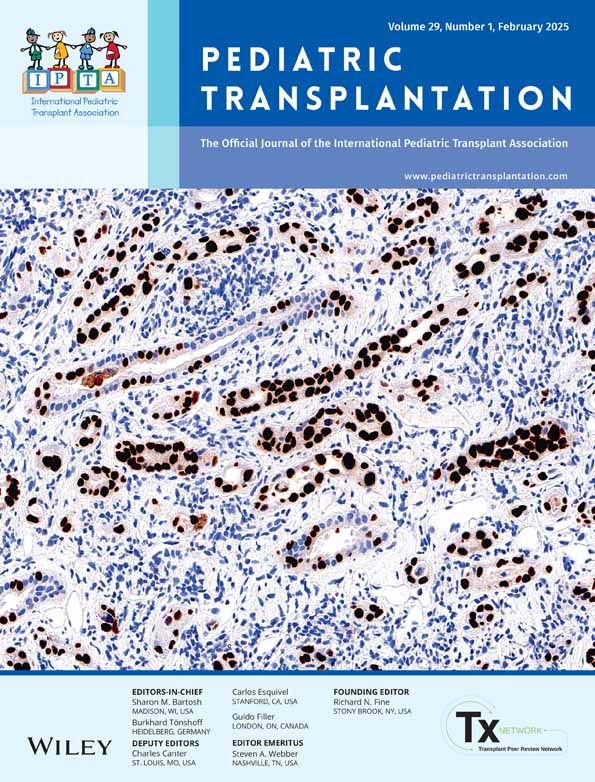Access to Kidney Transplantation for Minority Children With End-Stage Renal Disease and Predictors of Post-Transplant Outcome: Impact of Race and Ethnicity
Presented at the 28th International Congress of The Transplantation Society, Seoul, South Korea.
ABSTRACT
Background
Racial disparities in access to kidney transplantation (KT) have been described among children with end-stage renal disease in the United States. It has been suggested that these disparities stem from a combination of clinical and socioeconomic factors.
Methods
We evaluated data from the US Scientific Registry of Transplant Recipients (SRTR) of all pediatric (< 18 years old) KT recipients from 1999 to 2014 and compared outcomes by race or ethnicity: Hispanic, non-Hispanic Whites (NHW), and non-Hispanic Blacks (NHB). We assessed 1- and 5-year patient survival (PS) and death-censored graft survival (DCGS) using Kaplan–Meier survival cures. Multivariate logistic regressions of graft failure by 1 and 5 years examined effects of race/ethnicity by controlling for donor and recipient characteristics including living or deceased donor, recipient age, BMI, re-transplant status, cPRA, HLA mismatch, graft rejection, cold ischemia time (CIT), and type of insurance.
Results
During the 15-year period, 11 740 (6596 NHW, 2306 NHB, and 2838 Hispanic) pediatric KT recipients were performed in the United States. Compared to NHW (250 ± 335 days), NHB (293 ± 348; p < 0.001) and Hispanics (322 ± 353; p < 0.001) spent more time on the waitlist. One-year PS for NHW, NHB, and Hispanics was 98.6%, 98.6%, and 99.0%, respectively; one-year DCGS was 95.5%, 93.7%, and 96.0%, respectively. Five-year PS for NHW, NHB, and Hispanics was 95.5%, 93.1%, and 95.5%, respectively; five-year DCGS was 80.7%, 60.3%, and 76.3%, respectively. Multivariate analysis showed that higher recipient cPRA (OR 1.0, 95% CI 1.0–1.0; p = 0.005), greater HLA mismatch (OR 1.1, 95% 1.0–1.3; p = 0.008), rejection (OR 3.9, 95% CI 2.1–7.0; p < 0.001), and secondary kidney transplantation (OR 15.0, 95% CI 11.5–19.4; p < 0.001) were associated with 1-year graft loss; older recipient age (OR 1.1, 95% CI 1.1–1.1; p < 0.001), higher recipient cPRA (OR 1.0, 95% CI 1.0–1.0; p < 0.001), greater HLA mismatch (OR 1.1, 95% CI 1.0–1.1; p = 0.002), rejection (OR 2.0; 95% CI 1.3–3.0; p = 0.001), and secondary kidney transplantation (OR 11.2, 95% CI 9.6–13.0; p < 0.001) were predictive of 5-year graft loss. Patients with public insurance have higher risks of 1-year and 5-year graft loss (p < 0.001) than those with private insurance payers.
Conclusion
Racial and ethnic minority children in the United States have lower access to KT with clinical outcomes suggesting a disparate trajectory. NHB demonstrate unfavorable DCGS while Hispanic children have comparable or better DCGS and PS outcomes compared to NHW. Elucidating the clinical or socioeconomic roots of these differences may identify mitigating measures that can improve KT outcomes for these minoritized populations.
Conflicts of Interest
The authors declare no conflicts of interest.
Open Research
Data Availability Statement
The data that support the findings of this study are available on request from the corresponding author. The data are not publicly available due to privacy or ethical restrictions.




